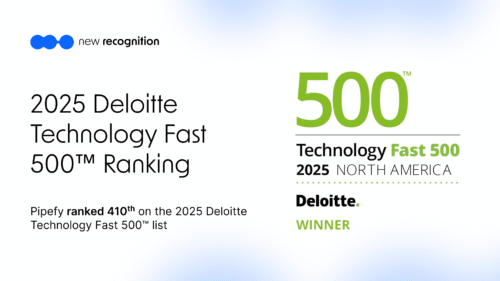
We complete tasks to work, play, and live — and very few things would be possible without a task, or series of tasks, occurring beforehand.
Sometimes we find the ideal series of steps to complete a task quickly and simply. When that happens, it’s natural to duplicate those steps each time. Other tasks are so important to get right that their steps must be performed with special care and precision.
When applied to business operations, both of these circumstances benefit from workflows. Workflows are made up of the steps required to carry out a task — the same steps we mentioned above — formalized into a plan.
To effectively use a workflow, it’s helpful to have a visual representation of the required steps and what they entail, or a workflow model.
What is a workflow model?
A workflow model depicts each individual involved, along with every action and reaction, in a way that is clear to all users and stakeholders. Workflow models emphasize following the right steps to reach the desired result.
Workflow modeling can be done with pen and paper, or with a whiteboard and sticky notes. But businesses with large amounts of processes and customers will quickly learn that digital workflow tools will meet their needs with speed and security. In these cases, they often turn to automation software.
Automation tools take each step that makes up a task and apply pre-defined rules (like if-then logic) to complete that step and move the process forward. The software is programmed to repeat the steps in the same way every time the process is performed, eliminating the need for intervention from a human.
Automation is an ideal solution for building and modeling workflows because of its ease of use and versatility. Most workflow or process automation tools include drag-and-drop front-end interfaces and a large variety of templates to choose from. The templates range anywhere from human resources onboarding processes to procure-to-pay purchase order approvals.
Workflow models are beneficial to businesses in several ways, including:
- Cost savings. Mapping every part of a process offers visibility into how it works. Workflows can quickly become outdated, rendering some steps futile or candidates for automation (those performed with no human input). Removing those steps and the resources associated with them can yield significant operational cost savings for businesses.
- Increased productivity. In a recent Pipefy survey of business and IT leaders regarding the future of automation, a whopping 68% responded that increasing productivity is the primary driver behind the adoption of automation and no-code tools.
- Full workflow visibility via workflow models allows managers to see the points at which obstacles and silos slow processes, often for the first time. A workflow model serves as a guide for places to automate, eliminate waste, and fill resource gaps with new equipment and new or upskilled employees. These actions, in turn, often result in a sharp productivity boost.
- Increased product quality resulting in better customer/user experiences. When employees perform the same workflow each time they do a task by following a documented workflow model, that workflow becomes standardized. This is critical for businesses that manufacture products; each product must be the same, with the same standards of quality and compliance. The act of building a workflow model simultaneously creates quality standards.
Build better workflow models with the Definitive Guide to Workflow Management
3 basic workflow components
Every workflow is composed of three common elements: a trigger, the work (or a series of tasks), and the result. Below, we walk through each of these elements to help you understand and recognize them in your own flow.
Trigger
A trigger is any event or action that sets the workflow in motion and results in a specific outcome. Common triggers include:
- CRM – a sales prospect fills out and submits a form
- Recruiting – a candidate submits a job application
- Accounts payable – an invoice is received
- Procurement – an employee submits a purchase request
- Collaboration – an email or notification is received
- HR – an employee updates personal information
- Operations – a weekly task becomes due
Work
Of the three basic workflow components, work is the most complex because it can require several steps, inputs, and actors. Several elements of the workflow converge at this point, including tasks, actors, and information.
Work or tasks
Activities that must be completed to produce the result. Humans, software, or machines may complete tasks. Some tasks are automated, while others are completed manually. In most cases, however, work activities require some amount of effort and consume resources such as time or money.
Actors
According to workflow experts Alec Sharp and Patrick McDermott, an actor is anyone or anything that “handles the work item in any way, shape, or form.” It’s important to be able to identify every actor in the workflow to develop a “workflow X-ray,” or a model of the workflow in which nothing remains hidden. Keep in mind that an actor can be a person, a system, or a machine. If they influence the work, they can be considered an actor.
Information
In most workflows, information is exchanged or handed off as the work progresses through the flow. This work is often a document, file, or extracted from a database. In some automated workflows, it may be data captured in a form. Examples of work include:
- Sales teams emailing information to prospects and scheduling a call.
- An item being assembled.
- Receiving applications, reviewing for completion, and forwarding to the appropriate hiring manager.
- The three-way matching process to ensure accuracy of invoices.
- Purchasing managers approving or declining a purchase request.
- Sending tax forms to employees for completion.

Result or outcome
The result is the product, service, or information that the workflow produces for the customer. Customers may be internal or external. Sharp and McDermott define the customer as “the recipient or beneficiary of the result produced by the business process.”
In this view, the customer could be someone in the marketing team who receives a purchase approval (in a purchase approval flow), or a vendor being paid (in an AP or P2P workflow). It could also be a customer who buys a product or service.
To qualify as an outcome of the workflow (or a process), the result must meet a few criteria. According to Sharp and McDermott, a result must be:
- Distinct and identifiable (you must be able to see a specific instance of the result).
- Countable (you should be able to quantify the number of results produced by the flow in a specific amount of time).
- Essential (the result is a requirement of the business or operation).
Types of workflow models
Sequential
These workflows are usually chart-based, flowing forward from one step to the next, and each step depends on the completion of the activities of the previous step. Think of this workflow as a connect-the-dots system: follow the numbers correctly, one after the other, to complete the big picture.
A great example of a sequential workflow model is that of managing the sales processes of a products and services department. The steps always remain the same, with no returning to previous activities or skipping forward.
State machine
The state machine workflow is more complex, progressing from one state to another, often returning and going forward between steps when necessary.
State machine workflow models can be compared to solving jigsaw puzzles — completing them requires the constant placing of important pieces together to complete a project. They are ideal models for processes that contain creative elements, or products and services that require extra review or input from clients and management.
Rules driven
Rules-driven workflow models are executed based on sequential workflows with rules that dictate their progress. They are, in essence, following blueprints to make a complete structure. Rules-driven workflows are most useful when tackling a variety of projects with clear goals but varying levels of specifications.
8 steps to create or improve a business workflow model
1. Determine the level of detail
A hazard of modeling workflows is that it’s easy to get bogged down in too much detail. The opposite is true, as well: a lack of relevant information can render the model inaccurate and ineffectual.
Before getting started, talk to stakeholders and decide how much detail you’ll need for the model to be effective. In general, there are three levels of detail to consider:
- Macro or “big picture” level. This model provides a higher-level view of a workflow, focusing on the flow’s comprehensive structure and identifying all actors who will perform the work.
Macro-level workflow models highlight handoffs (the points at which the work changes hands) because these are both critical parts of workflows and the most vulnerable to bottlenecks and obstacles. They are especially useful for understanding complex business processes. - Medium or “functional activity” level. These workflow models go into a bit more detail than the Macro perspective, including all key players in the flow as well as some information about the flow’s required tasks. Medium-level workflow models are most useful for teams who are looking for opportunities to automate manual processes.
- Task-level or procedure-level detail. This highly detailed view of workflows zooms into individual workflow steps. It delves into the information required to understand how a task is completed, how a handoff is managed, or how the work is affected by a tool, system, or person. This view is ideal for teams interested in task automation.
2. Decide whose help you’ll need
It’s unlikely that you will be an expert on every step of the workflow, so it’s important to identify the expert to get their insights. This will give you a much more accurate picture of the existing workflow. Look for citizen developers who can share their experience and knowledge.
3. Create a plan for process discovery
Thinking strategically about how you’ll get the information you need will help you create a meaningful, accurate workflow map. You may need to schedule process discovery sessions with teams or individuals to get the feedback you require. Consider special supplies you may need, like a large whiteboard and sticky notes.
4. Establish the workflow boundaries
What is the scope of the workflow you are modeling? When you pose this question, you’re asking for a clear definition of both the trigger of the workflow and its result, or boundaries. This is an often overlooked part of workflow modeling.
When the scope isn’t heeded, it’s easy for new steps and/or deliverables that simply aren’t necessary or change the workflow’s purpose, can appear; this is a phenomenon known as scope creep.
5. Stay mindful of the customer’s perspective
The customer of the process or workflow you are modeling is anyone — internally or externally — who receives the result of the flow and who can pass judgment on the quality of the flow. Faster production, for example, may mean alterations to products the customer is satisfied with. Always consider how new and changed workflows will ultimately affect customers.
6. Identify every actor
Creating a thorough inventory of every person, system, or machine that holds the work is critical for workflow accuracy. Keep in mind that actors may or may not add value: in some cases, actors are those who help move the work along or hold the work temporarily.
7. Illustrate every step in the flow, even if it seems inconsequential
As you build your workflow model, account for every step in the workflow. Managers can sometimes overlook small details when laying out each step; avoid making this mistake. Those inconsequential parts of everyday work are often places at which waste has occurred unnoticed.
8. Pay close attention to handoffs
As points of transition, handoffs are critical in workflows. They are also, unfortunately, known for their tendency to enable delays and miscommunications. Because some workflows (like the approval process) are essentially comprised of a series of handoffs, choosing the right actors and setting firm deadlines are important.
Tools for modeling your workflows
Business process automation (BPA) platforms can help organize, customize, and optimize any workflow. Look for tools with options to create reports, build automations, and integrate with your existing tech stack.
Pipefy’s no-code BPA platform is designed to help companies streamline everyday tasks and automate repetitive processes. It can be used to manage any type of workflow and all types of business processes, including IT, HR, P2P, sales, and other service request categories. And with Pipefy AI, managing workflows has never been easier. Enlist the help of an AI-powered chatbot to create processes, simply by telling it what you need. Make more strategic, data-driven decisions faster while providing each employee with a virtual assistant.










